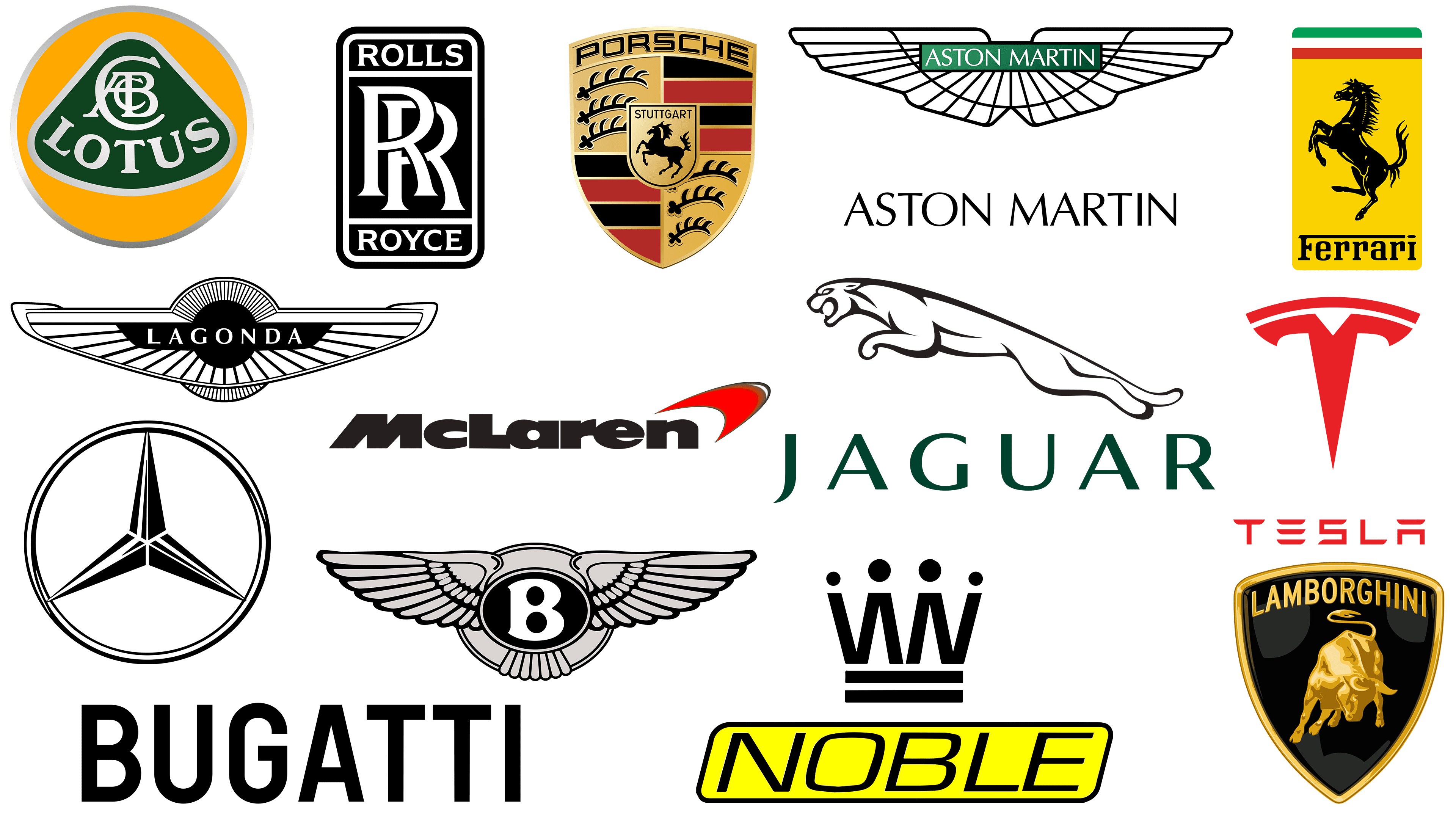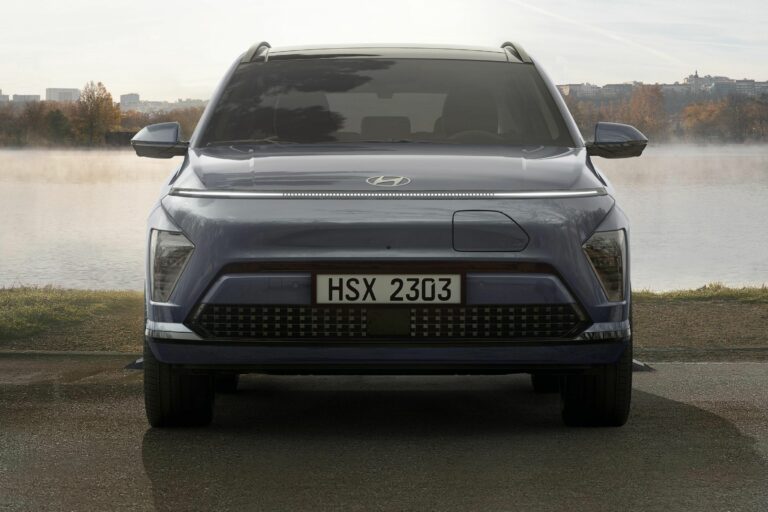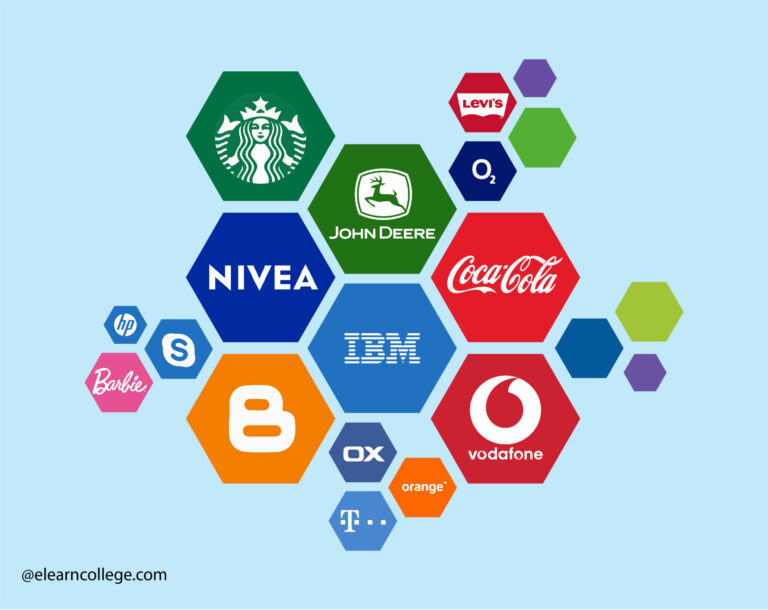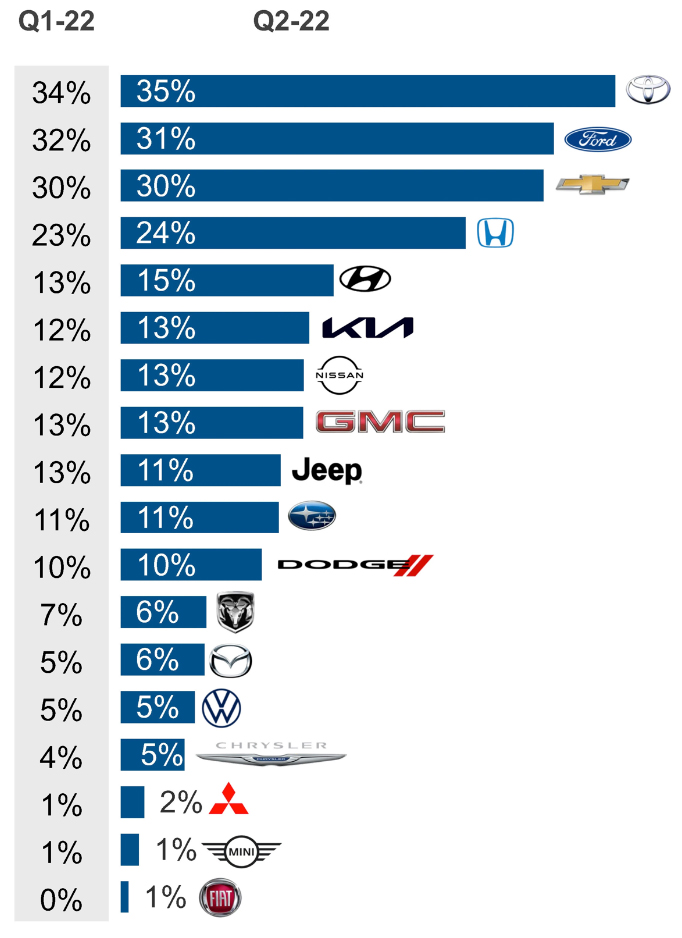Luxury Car Brands Logos: Emblems of Prestige, Power, and Precision
Luxury Car Brands Logos: Emblems of Prestige, Power, and Precision cars.truckstrend.com
Introduction: More Than Just a Mark
In the rarefied world of luxury automobiles, a logo is far more than a mere graphic design; it is a potent emblem, a shorthand for heritage, innovation, performance, and exclusivity. Luxury car brands have cultivated their identities over decades, sometimes centuries, meticulously crafting visual signatures that encapsulate their core values and aspirations. These logos – from the majestic beasts of performance cars to the intricate crests of stately sedans – are instantly recognizable symbols of aspiration, a silent promise of unparalleled craftsmanship, advanced engineering, and an elevated driving experience. Understanding luxury car logos is to delve into the very essence of brand identity, revealing how simple shapes and colors can evoke profound emotional connections and signify a legacy built on prestige and power. This article will explore the multifaceted world of luxury car brands’ logos, dissecting their design principles, historical significance, psychological impact, and the critical role they play in shaping brand perception and market value.
Luxury Car Brands Logos: Emblems of Prestige, Power, and Precision
The Anatomy of a Luxury Car Logo: Design Principles That Endure
Luxury car logos are masterpieces of design, adhering to principles that ensure timelessness, versatility, and immediate recognition. These principles are not accidental; they are the result of deliberate choices aimed at conveying a specific brand message.
- Simplicity and Sophistication: A hallmark of luxury is understated elegance. Most luxury car logos eschew clutter, favoring clean lines, balanced proportions, and a minimalist aesthetic. This simplicity allows for immediate recognition and a sophisticated feel that resonates with discerning clientele. Think of Audi’s four rings or Mercedes-Benz’s three-pointed star – instantly identifiable, yet profoundly simple.
- Symbolism and Storytelling: Every luxury logo tells a story. Whether it’s an animal representing power and speed (Ferrari’s Prancing Horse, Lamborghini’s Raging Bull), a historical crest signifying lineage and nobility (Cadillac, Porsche), or abstract shapes embodying technological prowess (BMW’s Roundel, Audi’s Rings), the symbolism is deep-rooted. These stories connect consumers to the brand’s heritage and values, fostering a sense of belonging and aspiration.
- Timelessness: Unlike fashion trends, luxury car logos are designed to endure. They evolve subtly over decades, adapting to new technologies and aesthetic sensibilities without losing their core identity. This longevity reinforces the brand’s stability and reliability, assuring customers of enduring quality.
- Versatility and Scalability: A luxury car logo must perform across a myriad of platforms – from the gleaming grille of a vehicle to a tiny key fob, from digital advertisements to embroidered upholstery. Its design must be robust enough to maintain its integrity and impact regardless of size, color, or material application.
- Exclusivity and Craftsmanship: Often, the logo itself reflects the meticulous attention to detail found in the cars. Whether it’s the precise angles of a Bentley "B" or the delicate wings of a Rolls-Royce’s Spirit of Ecstasy, the logo communicates a commitment to craftsmanship that transcends mere utility.

A Journey Through Iconic Luxury Car Logos: Types and Categories
Luxury car logos can broadly be categorized by their dominant design themes, each speaking to a particular aspect of the brand’s identity:
Emblems of Heritage and Nobility
- Mercedes-Benz (Three-Pointed Star): Arguably one of the most recognizable logos globally, the three-pointed star symbolizes Daimler-Motoren-Gesellschaft’s ambition to dominate land, sea, and air. Its elegant simplicity conveys precision, engineering excellence, and enduring luxury.
- Rolls-Royce (Spirit of Ecstasy & Double "R"): The iconic "Spirit of Ecstasy" bonnet ornament, often referred to as "Emily," embodies grace, speed, and silence. Complementing it is the interlocking "RR" monogram, representing founders Charles Rolls and Henry Royce, a testament to their enduring partnership and dedication to perfection.
- Cadillac (Crest and Wreathed Shield): Rooted in French aristocracy, the Cadillac crest has evolved significantly but always retains elements of its original family coat of arms, signifying nobility, courage, and pioneering spirit in automotive luxury.

Symbols of Speed and Power
- Ferrari (Prancing Horse): The iconic Cavallino Rampante (prancing horse) was originally the emblem of Italian WWI ace Francesco Baracca. Adopted by Enzo Ferrari, it symbolizes courage, power, and speed, set against a Modena yellow shield representing the city of Maranello.
- Lamborghini (Raging Bull): Ferruccio Lamborghini, a Taurus, chose the raging bull as his emblem to signify power, aggression, and uncompromising performance. Each model is often named after a famous fighting bull, reinforcing this powerful imagery.
- Porsche (Stuttgart Coat of Arms): The Porsche crest integrates the Stuttgart city coat of arms (a black horse on a yellow shield) with the Württemberg state arms (red and black stripes with antlers). It signifies the brand’s deep roots in the region and its commitment to German engineering and heritage.
Marks of Precision and Engineering
- Audi (Four Rings): The four interlocking rings represent the 1932 merger of four previously independent automobile manufacturers: Audi, DKW, Horch, and Wanderer, forming Auto Union. It symbolizes unity, strength, and a shared legacy of engineering innovation.
- BMW (Roundel): The BMW roundel, with its blue and white quadrants, is widely believed to represent a spinning propeller against a blue sky, harkening back to the company’s aviation origins. However, it officially symbolizes the Bavarian flag colors (white and blue) within a circular format, representing precision engineering.
- Lexus (Stylized "L"): The Lexus logo is a sleek, stylized "L" encased in an oval, representing luxury, elegance, and precision. Its simplicity belies the sophisticated engineering and meticulous attention to detail that defines the brand.
Abstract and Modern Luxury
- Genesis (Winged Emblem): The Genesis winged emblem, reminiscent of an eagle’s wings, evokes a sense of freedom, flight, and aspirational luxury. It is a more contemporary design, signaling a new era of sophisticated automotive luxury.
The Evolution of Luxury Car Logos: Adapting to Modernity
While timelessness is crucial, even luxury car logos must evolve. The challenge lies in balancing cherished heritage with the demands of modern aesthetics and digital platforms. Recent years have seen a trend towards "flat design" – simplified, two-dimensional versions of logos that perform better on screens and in digital marketing.
Brands like BMW and Audi have subtly refined their logos, removing gradients and dimensionality to create cleaner, more adaptable marks. Mercedes-Benz has maintained its classic star but continues to explore its application in new, innovative ways. The goal is to remain instantly recognizable while feeling contemporary and relevant to new generations of buyers who consume media predominantly through digital channels. This evolution showcases a brand’s adaptability and forward-thinking approach without abandoning its foundational identity.
The Psychological Impact and Marketing Power of Logos
The power of a luxury car logo extends far beyond mere identification; it taps into deep psychological triggers and serves as a formidable marketing asset.
- Brand Recognition and Recall: A distinctive logo ensures instant recognition in a crowded marketplace. It’s the first touchpoint, forming a lasting impression that links directly to the brand’s reputation.
- Emotional Connection: Luxury logos evoke aspiration, success, and desire. Owning a car with a prestigious logo is not just about transportation; it’s about making a statement, fulfilling a dream, and joining an exclusive club.
- Perceived Value: The logo itself adds intrinsic value to the product. It suggests quality, reliability, and superior craftsmanship, allowing brands to command premium prices.
- Trust and Authenticity: A well-established logo signifies a trusted brand with a long history of delivering excellence. It assures consumers of the authenticity and high standards of the product.
Practical Advice: What Makes a Logo "Luxury"?
For designers, marketers, or anyone seeking to understand the essence of luxury branding, here’s what makes a logo truly "luxury":
- Simplicity is Key: Avoid complex details. The simpler the design, the more elegant and timeless it tends to be.
- Strategic Use of Color and Material: Luxury logos often utilize metallic finishes, deep monochrome palettes (black, white, silver, gold), or rich, sophisticated colors that convey depth and quality. The material on which it’s displayed (chrome, polished steel, fine leather) also plays a crucial role.
- Font Choice Matters: Typefaces are usually custom-designed or carefully chosen. They are typically elegant, clean sans-serifs, or classic serifs that convey sophistication and readability.
- Integrate Brand Story: A compelling narrative behind the logo adds depth and meaning, making it more memorable and resonant.
- Ensure Consistency Across Platforms: Maintain absolute consistency in logo application across all brand touchpoints – from the car itself to advertising, digital media, and merchandise. This reinforces brand integrity and professionalism.
Challenges in Logo Design and Brand Management
Even for established luxury brands, managing their logos presents unique challenges:
- Balancing Tradition with Innovation: How much can a logo change before it loses its historical connection? Finding this balance is crucial for staying relevant without alienating loyal customers.
- Counterfeiting: The prestige of luxury logos makes them targets for counterfeiters. Protecting the brand mark through legal means and design intricacies is an ongoing battle.
- Maintaining Relevance: As demographics shift and new generations emerge, ensuring the logo continues to resonate with evolving tastes and values is vital for long-term success.
Conclusion: The Enduring Power of a Symbol
Luxury car brands logos are much more than decorative elements; they are powerful corporate assets, encapsulating decades of heritage, engineering prowess, and aspirational values. They are designed to be timeless, instantly recognizable, and deeply symbolic, communicating a brand’s identity and promise at a glance. From the storied emblems of European aristocracy to the sleek marks of modern innovation, these logos are silent ambassadors, speaking volumes about the exclusivity, performance, and prestige they represent. In a world saturated with visual information, the clarity, elegance, and profound meaning embedded within these iconic symbols ensure their enduring power and continued relevance in defining the pinnacle of automotive luxury.
Table: Iconic Luxury Car Brands Logos – Design, Symbolism & Brand Equity Contribution
While a logo itself doesn’t have a direct "price" in the traditional sense, its contribution to the overall brand value and equity is immense. This table highlights key information about selected luxury car brand logos, interpreting "price" as their symbolic value and contribution to brand equity.
| Brand | Logo Description | Core Symbolism/Meaning | Design Philosophy/Evolution Note | Brand Equity Contribution (Symbolic "Price") |
|---|---|---|---|---|
| Mercedes-Benz | Three-pointed star, often silver/chrome. | Domination of land, sea, and air. Excellence, reliability. | Timeless, subtly refined for modern applications. | Multi-billion dollar asset; Global icon of luxury & engineering. |
| BMW | Blue and white roundel. | Bavarian flag colors; often associated with spinning propeller. | Evolved towards flat design for digital clarity; retains core. | High; synonymous with driving pleasure & German engineering. |
| Audi | Four interlocking silver rings. | Unity of four merging automotive companies (Auto Union). | Modernized with flattened design, maintaining classic structure. | Significant; represents progressive luxury & advanced tech. |
| Rolls-Royce | "Spirit of Ecstasy" figurine & "RR" monogram. | Grace, speed, silence, luxury; founders’ partnership. | Enduring, iconic; the figurine is a masterpiece of art. | Immeasurable; epitome of ultra-luxury & exclusivity. |
| Ferrari | Black prancing horse on yellow shield with "SF". | Courage, power, speed; tribute to WWI ace Baracca. | Consistent, highly recognizable; symbolizes passion & performance. | Priceless; represents ultimate supercar performance & heritage. |
| Lamborghini | Raging bull, often black or gold. | Strength, power, aggression; founder’s Zodiac sign. | Bold, dynamic; reinforces high-performance, exotic identity. | Strong; defines aggressive styling & raw power. |
| Porsche | Stuttgart crest with prancing horse & Württemberg antlers. | Deep roots in Stuttgart & Baden-Württemberg region. | Classic, detailed; highlights heritage and sporting prowess. | High; synonymous with precision sports cars & racing legacy. |
| Bentley | Stylized "B" with wings. | Speed, elegance, freedom, power. | Consistently refined; exudes British craftsmanship & luxury. | Substantial; represents bespoke luxury & grand touring. |
| Lexus | Stylized "L" within an oval. | Luxury, elegance, precision. | Sleek, modern, minimalist; signifies refined Japanese luxury. | Growing; known for reliability, quality & sophisticated design. |
| Cadillac | Evolved crest/shield. | French nobility, pioneering spirit, bold leadership. | Underwent significant simplification and modernization. | Reinvigorated; represents American luxury & innovation. |
| Aston Martin | Winged emblem with "Aston Martin" script. | Speed, elegance, flight, British heritage. | Timeless; symbolizes sophistication, power & exclusivity. | Significant; iconic British luxury sports car brand. |
| Genesis | Winged emblem with shield. | Aspiration, elegance, protection, new era of luxury. | Contemporary, fresh; defines a distinct, modern luxury identity. | Emerging; building strong brand equity in luxury segment. |
Note on "Brand Equity Contribution (Symbolic ‘Price’)": This column reflects the immense, often immeasurable, value that the logo contributes to the overall brand’s market standing, recognition, and perceived worth, rather than a literal monetary price for the logo itself.
Frequently Asked Questions (FAQ) about Luxury Car Brands Logos
Q1: Why are luxury car logos so important?
A1: Luxury car logos are crucial because they serve as immediate visual identifiers for the brand, conveying its heritage, values, and promises. They evoke emotional connections, signify status, and contribute significantly to brand recognition, perceived value, and overall market position. They are a powerful shorthand for the brand’s identity and aspirational qualities.
Q2: Do luxury car logos change often?
A2: Generally, no. Luxury car logos are designed for timelessness. While they may undergo subtle refinements (e.g., flattening for digital use, minor adjustments to proportions or colors) to stay current, their core design and symbolism remain consistent over decades, sometimes centuries, to maintain brand continuity and heritage.
Q3: What are common themes or symbols in luxury car logos?
A3: Common themes include:
- Animals: Representing power, speed, and agility (e.g., Ferrari’s Prancing Horse, Lamborghini’s Raging Bull, Porsche’s Horse).
- Crests/Shields: Signifying heritage, nobility, and lineage (e.g., Cadillac, Porsche).
- Geometric Shapes: Conveying precision, engineering, and unity (e.g., Audi’s Rings, BMW’s Roundel, Mercedes-Benz’s Star).
- Wings: Symbolizing speed, freedom, and aspiration (e.g., Bentley, Aston Martin, Genesis).
- Monograms/Initials: Representing founders or brand names with elegance (e.g., Rolls-Royce’s RR).
Q4: How do luxury car logos reflect the brand’s values?
A4: They reflect values through their design principles: simplicity and elegance for sophistication (Lexus); bold, aggressive shapes for performance (Lamborghini); historical references for heritage and tradition (Porsche, Cadillac); and precise, clean lines for engineering excellence (Audi, BMW). The materials used in their physical application (chrome, polished metals) also convey quality and luxury.
Q5: Are luxury car logos protected by intellectual property laws?
A5: Absolutely. Luxury car logos are highly valuable intellectual property and are rigorously protected by trademarks, copyrights, and other legal instruments worldwide. Brands invest heavily in legal protection to prevent counterfeiting and unauthorized use, safeguarding their brand identity and reputation.
Q6: What is the significance of the "Spirit of Ecstasy" for Rolls-Royce?
A6: The "Spirit of Ecstasy" is the iconic bonnet ornament of Rolls-Royce cars. She embodies grace, speed, and silence, representing the pinnacle of luxury and effortless motion. More than just a logo, she is a sculptural symbol of the brand’s unique blend of art, engineering, and exclusivity.
Q7: How have luxury car logos adapted to the digital age?
A7: Many luxury car brands have subtly adapted their logos for the digital age by adopting "flat design" principles. This involves removing gradients, shadows, and three-dimensional effects to create cleaner, simpler 2D versions that render better on screens, mobile devices, and in digital advertising, ensuring clarity and modern appeal without losing brand recognition.







